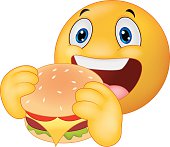The Five:Two Diet also known as the Fast Diet
The Five:Two Diet also known as the Fast Diet, is the most popular intermittent fasting diet around. Here’s how you do it and why it has worked for so many people.
What type of diet is the 5:2 diet?
 The fast diet involves intermittent fasting, which is an eating pattern that involves regular periods of food depravation.
The fast diet involves intermittent fasting, which is an eating pattern that involves regular periods of food depravation.
Made popular by British doctor and journalist Michael Mosley, the 5:2 diet, also known as The Fast Diet, is called the 5:2 diet because five days of the week are normal eating days, while the other two restrict calories to 500–600 per day.
This diet is actually more of an eating pattern than a diet. There are no requirements about which foods to eat, but rather when you should eat them. And because of this, many people find this way of eating to be easier to stick to than a traditional calorie-restricted diet.
BOTTOM LINE:
Eat normally for five days a week, then restrict your calorie intake to 500–600 calories on the other two days.
How to do the 5:2 diet
The simplicity of the diet and the fact you can eat pretty much what you like five days a week, are key to its popularity.
Eat a ‘normal’ number of calories five days a week and then, for two, non-consecutive days, eat just 25% of your usual calorie total – 500 calories for women and 600 for men.
There are no restrictions on the type of food you can eat and it is suggested that women can expect to lose about a 1lb a week on the diet with men losing about the same if not a little more.
It’s important to emphasise that eating “normally” does not mean you can eat literally anything. If you binge on junk food, then you probably won’t lose any weight, and may even gain weight.
You should eat the same amount of food as if you hadn’t been fasting at all.
Side Effects of the 5:2 diet
On fasting days some report feeling low in energy, having poor concentration and experiencing headaches and dizziness. Maintaining your hydration with water and herbal teas is important because dehydration can be a cause of headaches and tiredness. Include vegetables and protein on fasting days with some carbs in order to help manage and control your appetite. If you choose to follow the diet, make sure that your non-fast days are packed with nutritious options, including fruit, veg, wholegrains and lean protein such as chicken, fish, turkey and dairy foods.
How to minimise the side effects
Some people choose to ease into fasting by first starting to extend the time between their evening meal and the first meal the next day – the gap the advocates of this approach suggest is a minimum of 12 hours. Avoid fasting on two consecutive days – instead break your week up, for example, by fasting on Monday and Thursday – this helps prevent tiredness.
When you’re following any low-calorie diet, it’s important to make every calorie work – that means choosing nutrient-dense foods. You are far better opting for lean protein like poultry and vegetables rather than calorie-counted ready meals. The latter may seem like the easiest option, but they are not as satisfying.
Next, check out the other types of diets available.
